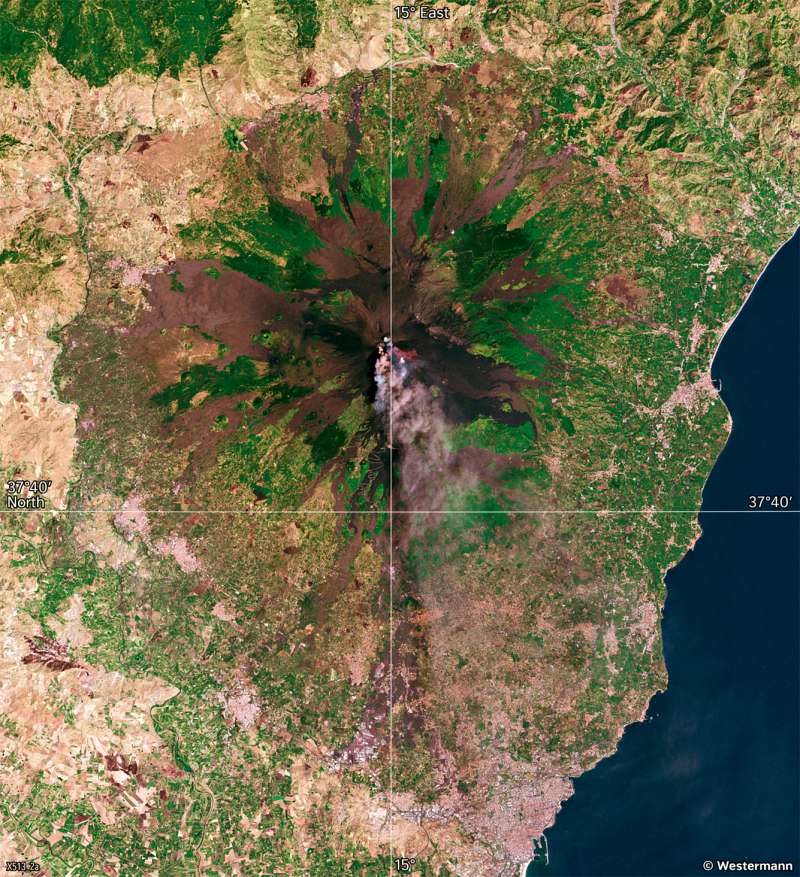Etna (Sicily) - Active volcano
Natural hazards
978-3-14-100890-6 | Page 51 | Ill. 4

Overview
The search for some of the largest and most active volcanoes in Europe leads to the south of Italy. Sicily is home to Mount Etna, the highest active volcano on the European mainland. It is also called Mongibello. But not only in Sicily, but also nearby, in the area of the Lipari Islands and a little further north near Naples, there is also active volcanism.
Unmissable volcanic activity
Its height varies constantly due to ongoing volcanic activity. This means the current height can never actually be determined correctly. The base area of the evenly shaped volcano is just under 1400 sq. km. Major eruptions occurred most recently in 1991/92 - during which the village of Zafferana Etnea was saved from destruction by the deflection of a lava flow in a dramatic rescue attempt - as well as in 2001 and 2002. Both times, the cable car leading to the top was destroyed. Numerous eruptions, often associated with earthquakes, are known from historical times: in 1669, lava flows reached the city of Catania and the sea, and in 1928 the railway line (Ferrovia Circumetnea) leading around the volcano near Mascali on the east coast. The lava emerges mostly from fissures and from the more than 270 known secondary craters.
Tourist development
Besides agricultural use, which is evident from both the map and the satellite image, Etna is well developed for tourism, including winter sports. From Catania, a road, the Strada dell'Etna, leads up to an altitude of 1995 m to Mount Etna. The cable car has been in operation again since August 2004 and leads from 2000 m up to about 2500 m. The cable car is also used for winter sports. You can even get to an altitude of about 3000 m with all-terrain buses. Shortly before the destination, at 2900 m, there is a volcanological observatory. Etna is one of the best-monitored volcanoes in the world. In 2013, it was declared a World Natural Heritage Site by UNESCO.
Volcanic agriculture
The dense settlement and intensive agricultural in this area are exposed to a high natural risk. Volcanic soils, however, are rich in minerals and well aerated. That is why fertile soils have developed around Etna. The mild Mediterranean climate has also favoured the cultivation of vines, fruit, and vegetables. In addition, there are olive groves and citrus fruit cultures. At lower altitudes, tropical fruits, vegetables, and fruit are cultivated. Vineyards are cultivated in the areas above. Above this follows a forest belt, which is replaced by a vegetation-free zone towards the top. The dark colouring in the satellite image indicates that indicates that the lava flows are more recent. Since ancient times, the region has been one of the most densely populated areas in Sicily, despite the constant threat of volcanic eruptions and earthquakes. There are similarly dense settlements on other volcanoes around the world, for example on Java.




